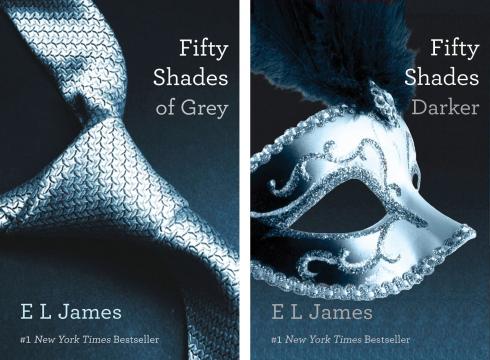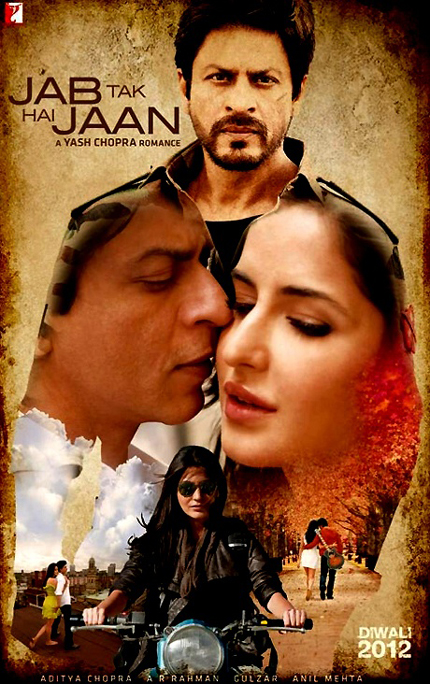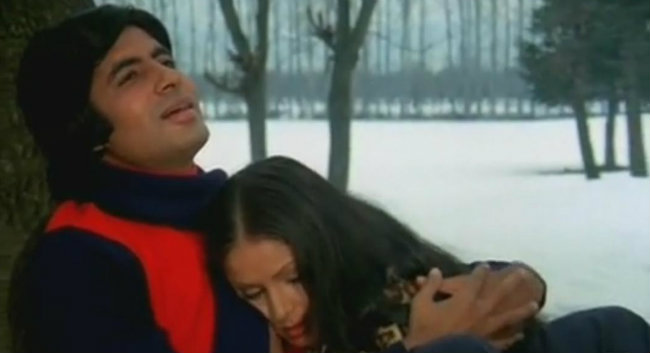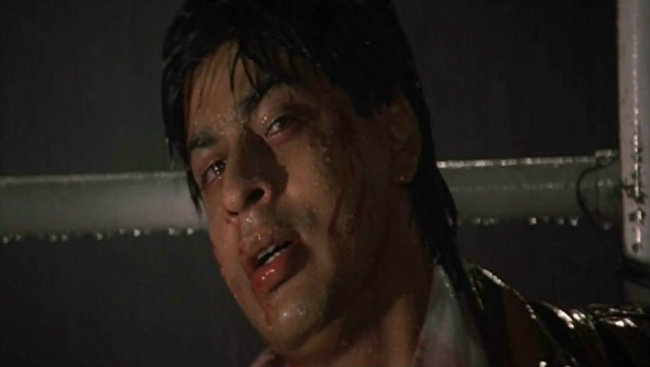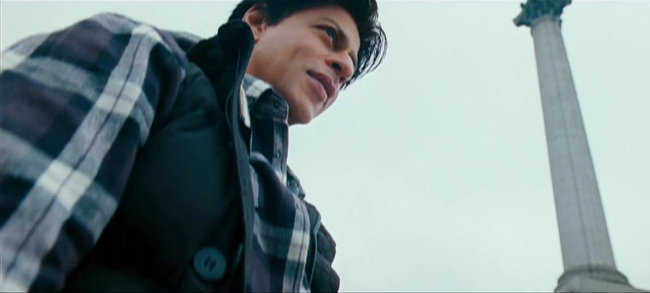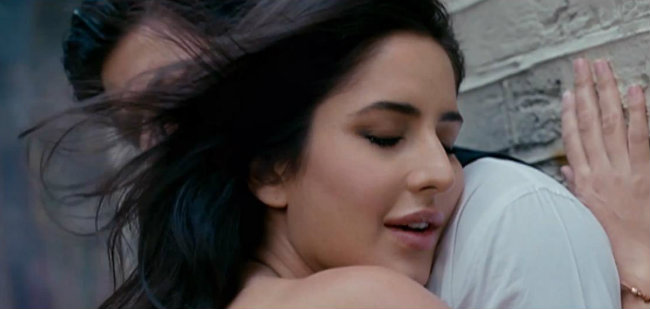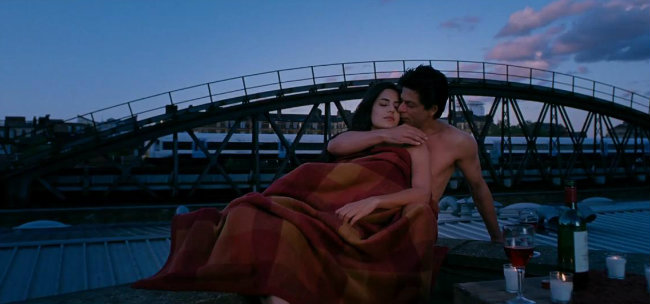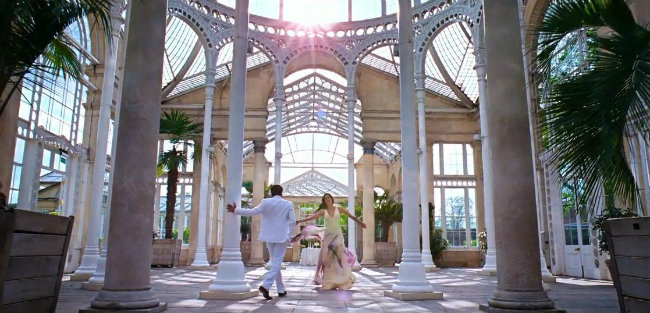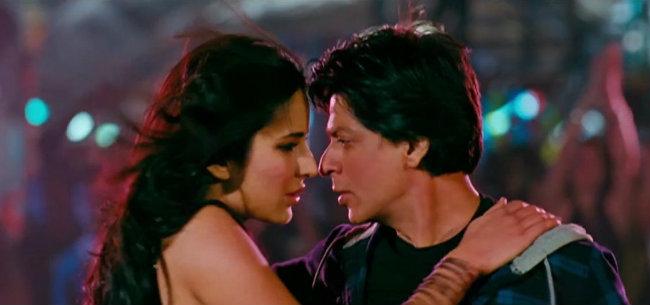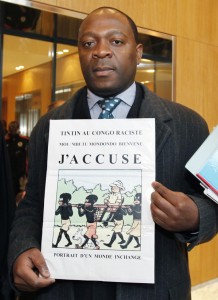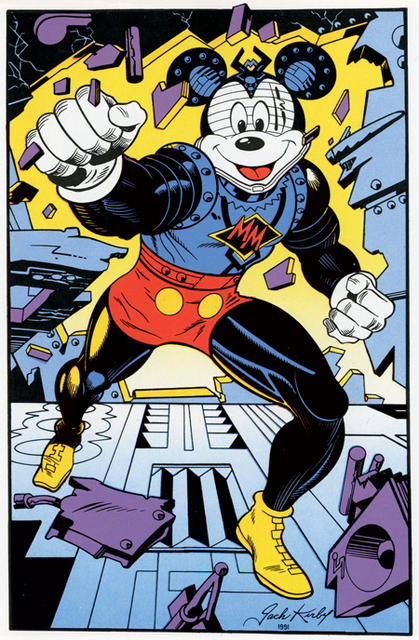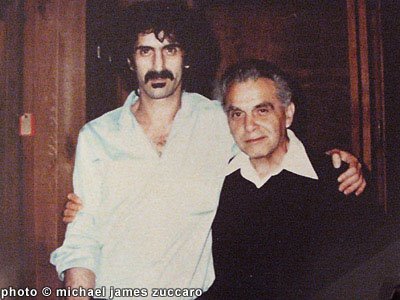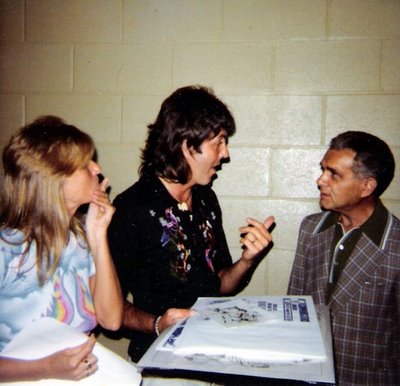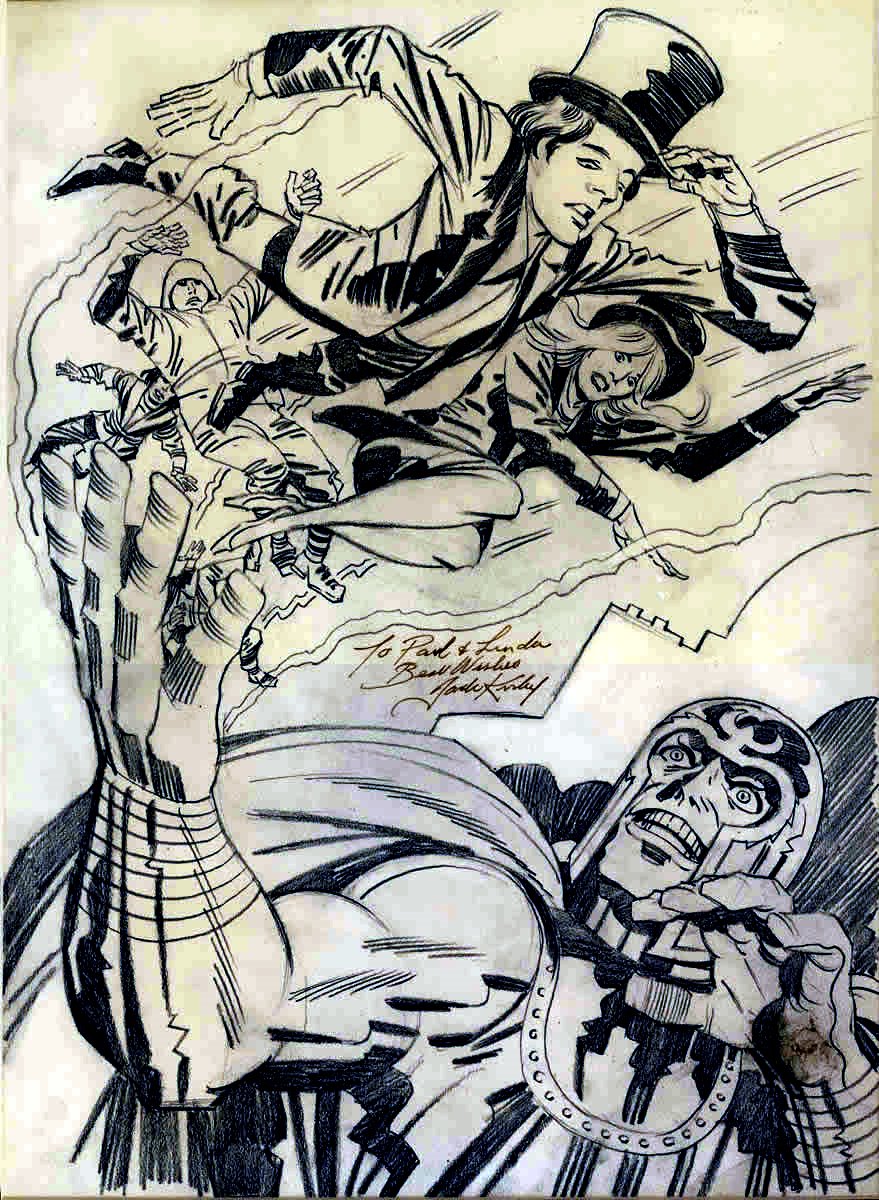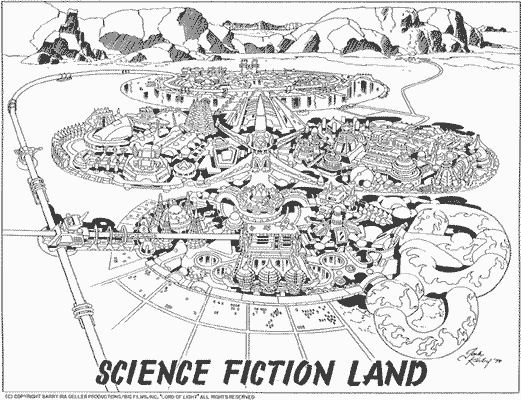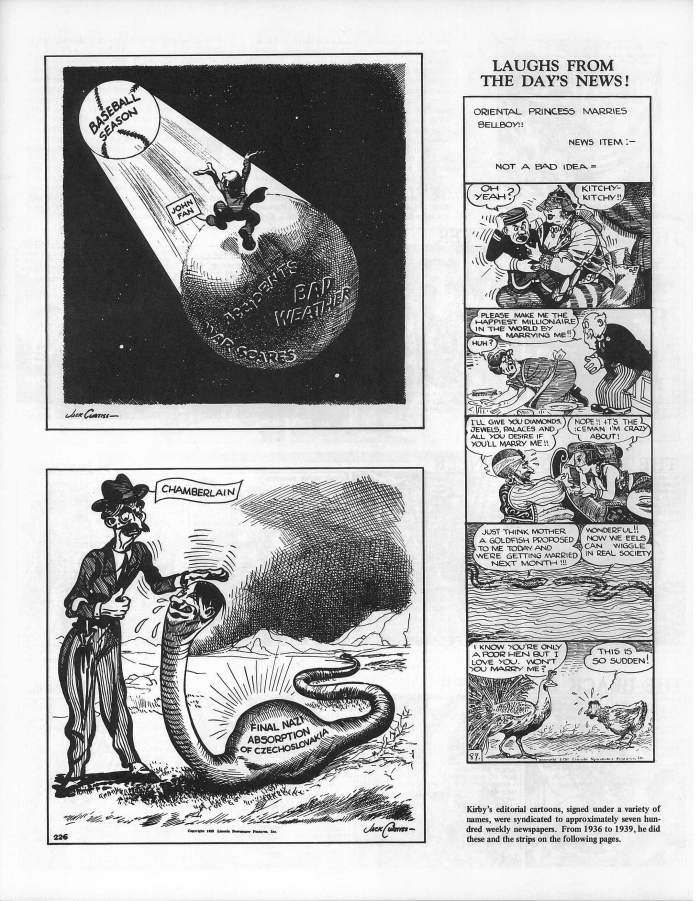Courtesy of my nine-year-old. I especially like the hat.
Monthly Archives: December 2012
Utilitarian Review 12/22/12
News
We’re headed into the holidays, obviously. Posting will be lighter than usual, though something or t’other will probably go up most days. In any case, have a happy season of happiness!
On HU
Featured Archive Post: me on Jack Cole’s pin-up art.
Vom Marlowe on the Inspector Lewis television cozies.
Bert Stabler on the radical feminism of St. Paul.
Subdee on Yamagishi Ryouko’s gender-bending Hatshepsut.
My nine-year-old provides a searing cultural critique of Brave and Django, Unchained.
I talk about how Bart Beaty’s ideas are my ideas, and comics scholars vs. comics bloggers. Beaty freaks out in comments, more or less confirming my thesis.
Alex Buchet on how the King drew Mickey, and other Kirby oddities.
Kim Thompson in comments on the rationale behind Fanta’s recent Kurtzman reissues.
I have some comments on the genocide against the orcs.
Domingos Isabelinho on the Brussels court and Tintin in the Congo.
Jog with the only epic contrarian Bollywood essay you’ll need this holiday season.
Utilitarians Everywhere
At the Atlantic I have a piece on Peter Jackson’s violent betrayal of Tolkien. I think this is now close to the most read thing I’ve ever written.
Also at the Atlantic, they let me write about Quentin Tarnatino’s great Jackie Brown and masculinity.
At Splice I talk about Tokien’s Hobbit and children’s lit vs. epic fantasy.
Also at Splice, I explain why I am not metal enough for Velnias.
And finally I contributed to Splice’s poll of best albums of the year.
Other Links
C.T. May on Sean Howe’s history of Marvel Comics.
Brian Cremins on Captain Marvel, gender, and department stores.
Qiana Whitted on Delany and comics definitions.
Bart Beaty interviewed at the Comics Grid.
This Week’s Reading
For a review I finished the first 50 Shades of Grey; only two more to go, god help me. Finished Alasdair MacIntyre’s “Whose Justice? Which Rationality?” by skipping over most of the incredibly detailed discussions of historical philosophical traditions and going straight to the ranting about how liberalism abstracts ideas from their philosophical traditions. Read John Christopher’s excellent “The Long Winter”. Started for review “The River of No Return,” by Bee Ridgway, aka Bethany Schneider, a dear friend I went to Oberlin with many, many moons ago.
The Most Popular Movie Column in the Entire World #2 – Every Man For Himself and God Against All
Six miles away from my office is a theater that plays Bollywood movies simultaneously with their Indian release. This is one of them.
***
Jab Tak Hai Jaan
Directed by Yash Chopra, 2012
***
WHAT CAN WE GUESS THE FILM IS ABOUT FROM THE UNSUBTITLED TRAILER?
Bollywood superstar Shah Rukh Khan (or, “SRK”) plays an incomparably stubbled member of the Indian Armed Forces whose motorcycle trip is interrupted by thoughts of girls. His is an artist’s soul, revealed through fleeting images of guitar-wielding promenades in foreign environments and vigorous dancing before hooting crowds of Anglo-Saxons, as well as a poetical voice-over narration. Alas, it is all a wistful flashback, as memories of — non-exclusively — (1) girls smiling, (2) girls leaning in a winsome manner, (3) girls twirling in the snow and (4) girls otherwise gesticulating prettily are interrupted by a barrage of b&w color-corrected images accompanied by an ambulance’s siren: bad news. Clearly we are in for a film of love, loss and potentially decorative wartime. His thirst for aesthetics duly slaked, SRK then concludes his journey to the Exploding Desert.
***
WHAT IS THE HISTORY BEHIND THIS PICTURE?
It would be a mistake to call Yash Chopra — founder of Yash Raj Films — an exclusive romantic, although that would probably be the impression his corporate body would prefer you have. It has been good business in Bollywood to set love stories down as the foundation of your art, yet the young Chopra, born in Lahore prior to the partition, began his filmmaking career with the social dramas Dhool Ka Phool (1959) and Dharmputra (1961), films that built him a reputation for dealing earnestly with issues of Muslim/Hindu conflict fostered by the establishment of India and Pakistan along religious lines. Later, in the ’70s, Chopra became one of the architects of the ‘angry young man’ persona for megastar actor Amitabh Bachchan; by this point the director had already become famous for the hot-blooded boy-girl melodrama (and Yash Raj foundational picture) Daag: A Poem of Love (1973), but ask a connoisseur and they’re more likely to cite Big B raging against god and society in Deewar (1975) as a decade’s highlight over anything more outwardly lovey.
But then, it is very possible to bask in the heated emotions of these films, this aesthetic of gut feeling, of human connection trumping religious or national or caste division on the basis of what seems, intuitively, to be the ‘right’ way to behave, and declare Yash Chopra a Romantic in the macro sense, irregardless of the presence of any picturesque Swiss lake presiding over the action of a tender little song.
Still, there’s no denying that the rough ‘n ready ’80s were tough on Chopra, or that his revival as a film director of popular relevance came by way of Chandni (1989), an exceedingly backlit vehicle for the always-great Sridevi Kapoor that ensured Chopra-as-director would never venture far from romance-as-genre ever again; perhaps his biggest departure since would be Darr (1993), and only then because nominal hero Sunny Deol is all but blown off the screen by the picture’s obsessive villain, played by a 28-year old Shah Rukh Khan in one of his most indelible early roles.
Darr, in fact, represented both a beginning and an end for Chopra and Yash Raj – two years later, Chopra’s son, Aditya, would pair with SRK for the enormously lucrative Dilwale Dulhania Le Jayenge (see our last episode for more). Neither man would ever direct a film without Khan again, and Yash Raj — which, until the 21st century, in movie production terms, had served mainly (if not exclusively) as a vehicle for the Chopras to release their own directorial ventures — would build its own shooting studio and enter a period of promoting new, young directors through in-house productions, albeit with A. Chopra often providing story synopses in what I tend to imagine is a rather Stan Lee manner.
Yash Chopra died on October 21, 2012, having completed shooting on all but one song sequence for his newest directorial outing, Jab Tak Hai Jaan. It had already been rumored that Aditya Chopra — officially the producer and writer (with screenplay aid by Devika Bhagat) — had directed portions of the film in his father’s name, but the younger man declined to shoot any posthumous scenes. Perhaps he was distracted by the contemporaneous and unwelcome characterization of Yash Raj as a Marvel-like evil empire; the company had secured agreements from theaters requiring their exhibition of Jab Tak Hai Jaan for a certain period as a prerequisite for receiving an earlier, much-anticipated Salman Khan vehicle, Ek Tha Tiger, and Ajay Devgn, a producer and actor, had subsequently filed a claim with the Competition Commission of India against Yash Raj, alleging “abuse of dominant position,” insofar as his own production, Son of Sardaar — the latest among multitudinous neo-masala remakes of Telugu-language pictures — could not manage adequate bookings as a result.
The claim was dismissed, but Yash Raj couldn’t entirely shake its verdict from the court of public opinion, whereby not a few observers deemed Jab Tak Hai Jaan and its eventual Rs 100+ crore domestic gross the beneficiary of protectionism and cunning. Worse yet, Devgn’s film company is supervised by the former Kajol Mukherjee, Devgn’s wife and SRK’s co-star from A. Chopra’s Dilwale Dulhania Le Jayenge, giving the whole affair a smack of familial betrayal. Nonetheless, it also became a notable hit overseas, standing as only the third-ever Bollywood film to land inside the U.S. Top 10 grossers for the week of its release. Clearly some romantic perceptions endure at a remove.
***
WHAT HAPPENS BEFORE THE INTERVAL?
Shah Rukh Khan! Grimly stubbled! Martially attired! He rides through a blazing desert, reciting poetry by A. Chopra! Violins arranged by ACADEMY AWARD(TM) WINNER A. R. Rahman leap on the soundtrack, while the middle-aged gentleman in the row ahead of me bobs his head! Then: a beautiful woman strips out of her workout gear to a teeny-tiny swimsuit! Yash Chopra: still randy at 80! She leaps into a mighty stream but oh – she cannot handle the water! Grimly, SRK deigns to save her life, then zooms away stoically on his manly motorcycle! But he left his fucking diary! Perhaps the secrets of his grim and manly stoicism are hidden somewhere… somewhere… in the past!
Jab Tak Hai Jaan is best described as pleasantly unspecific bullshit, or — more tactfully — a high-end entertainment. It’s basically an ‘epic’ romance, spanning the course of a decade and coyly implicating the occasional social issue; the intent, perhaps, is to prove more aesthetically nutritious than something like Son of Sardaar, though it’s basically still an unreal, sensuous fantasy steeped in an awful lot of Bollywood tradition. Indeed, the London setting of the flashback that takes up almost the entirety of the film’s first half — a 2002 that makes no effort to approximate period fashions or even attempt to hide the occasional Coke Zero advert — seems poised specifically to evoke memories of Dilwale Dulhania Le Jayenge, with SRK playing a similarly cocky goof of a twentysomething, on the prowl for honest, true love.
It must be said now that Shah Rukh Khan is 47 years old, and looks it. I will further suggest that his age doesn’t matter; part of the artifice of mainstream Bollywood films is that dependable male stars, heroes all, can presume to be as young as they please. Those corners of the audience prone to hemming and hawing will do just that, but in the end the public will buy it.
For women, the heroines, it’s very different.
I’m not about to make a bunch of ridiculous claims for mainstream Bollywood as a uniquely awful place for women — not in an American situation where as longstanding a directorial presence as Kathryn Bigelow hears prominent voices idly speculating that her success is attributable to her looks — but for an industry so interested in appealing to female ticket buyers, it’s a bit startling to see how lean the roles for women have become in Hindi pop film. The neo-masala wave has had an aggravating effect, with its emphasis on macho protagonists smashing their way to victory, but even romance-as-genre tends to slot women away for pining and pouting.
Into this scene comes the female lead of Jab Tak Hai Jaan, Katrina Kaif: the quintessential modern heroine.
Kaif is probably terrific with anecdotes. She was born in Hong Kong in 1984, and spent over a decade and a half shuttling with her English mother and numerous siblings to seemingly half the nations on earth — France! Japan! Poland! Belgium! — eventually settling into a modeling career in London. There, she was spotted by filmmaker Kaizad Gustad, and cast in a film titled Boom (2003), an experience that prompted the teenaged aspirant to relocate to Mumbai, despite knowing hardly any Hindi. Likely, she knew the language barrier wouldn’t prove goal-stopping – there is a long tradition in Bollywood of forgoing sync sound, after all, and virtually every performer ‘sings’ with an alternate voice anyway. What Katrina Kaif could offer, uniquely, was that touch of exotica useful in the ranks of models-turned-actresses, a mighty corps in the Mumbai ’00s. Filmmakers were perfectly willing to have her lines dubbed over by some native performer.
A funny thing happened, though – Kaif, having eventually paid her dues, developed a knack for appearing in blockbuster movies. Not starring, no – but appearing, in the way heroines today are generally made to ‘appear’ rather than ‘star.’ The only mainstream Bollywood actress under the age of 40 that I can even think of who regularly ‘stars’ in movies is Vidya Balan, with everyone else relegated to one-offs or ensembles, or the myriad pair-offs of boy-girl romantic comedies. Or appearances beside popular heroes in vehicles built around them.
Of the ten highest grossing Bollywood films of 2012, Katrina Kaif has been present for three (including #1, the aforementioned Ek Tha Tiger); aside from a cameo in a children’s animation thingy, that accounts for her entire year’s output. One of those appearances was even an item number: a gratuitous song sequence cameo by a performer otherwise uninvolved with the film, manufactured strictly for added value of some sort, be it star wattage or sex appeal. Some have claimed this sort of thing ought to be Kaif’s natural habitat; others say she’s not even very good at that.
Nose around the internet — or hell, read YouTube comments — and you’ll hear that Katrina Kaif cannot act. That she’s nothing but eye candy. That she’s stale eye candy – Kaif is 28 years old now, which places her perilously close to the Logan’s Run limit of a heroine’s viability as sufficiently fresh visual stimulus. Every so often you’ll get a Madhuri Dixit or an Aishwarya Rai Bachchan who remains viable in mainstream supporting roles into their 30s, but they are rare.
As such, in the spirit of contrarian joie de vivre for which this website has become enthusiastically footnoted, I will now suggest a new paradigm for the evaluation of Katrina Kaif performances: “Does Katrina Show Up?” Which is to say, she always appears, but – does she show up?
You see, my extensive Bollywood research has led me to conclude that the much-maligned Kaif is actually a pretty charismatic performer, but at the same time she’s realized that the nothing roles available to her require little to no particular effort on her part; indeed, Kaif herself has stated that she didn’t feel particularly free or confident to contribute actively to a film until 2009, over half a decade into her professional career. Other times, she really needs only be there to be photographed, and so that, I theorize, is all she does. Ek Tha Tiger is the perfect example of a Katrina Kaif role in which she seems entirely disengaged from the movie surrounding her, because – as logical observation dictates, what the fuck will she have to do in a goddamned Salman Khan movie anyway? But compare that with the 2011 Yash Raj romantic comedy production Mere Brother Ki Dulhan, where her role affords her ample opportunity to point guns and play drunk and engage in many forms of wholesome rebellion, and suddenly – she clicks.
Kaif’s role in Jab Tak Hai Jaan seems engineered to flatter all of her strengths. She is SRK’s London-based love interest (autobiography!), initially connecting with him to brush up on the Punjabi singing (language barriers!) that will surely please the rigid father who’s set her up to marry some monied dude she doesn’t particularly love (tropes!). She’s also a withdrawn, internal woman and a devout Catholic, prone to cutting little quid pro quo deals with Jesus to get (or perhaps justify) what she wants; this is the most important aspect of Kaif’s character, as it allows rakish SRK — at one point taking her on a role-play date in which he goes by the same name as his character from Dilwale Dulhania Le Jayenge, in case you didn’t get it — to release her inner wild child, which is fortunate, as what Katrina Kaif is best at doing is playing at a lack of inhibitions.
In this way, Jab Tak Hai Jaan becomes a metaphor for Kaif’s career as an actress; it’s the most apropos role she’s ever had. “Does Katrina Show Up?” YES.
There are other small rebellions in the first half of the film. After kneeling down with SRK to pray she won’t do anything untoward with him (Catholic girls!), Kaif takes him along to meet her estranged mother — ’70s star Neetu Singh, demonstrating that nostalgia cameos are an additional avenue of exposure after a comfortable hiatus — who readily admits that leaving her husband improved her life, as it allowed her to marry for love. Before long, the song Saans is playing, boasting Rahman’s most intense violins of the show and an impressive bait ‘n switch on visual expectations – where prior Yash Chopra films would present “dance sex” to approximate the lovemaking of the ecstatic couple, near-miss kisses and all, Jab Tak Hai Jaan has the dancing segue into an actual sex scene, thereafter blooming outward into a Bollywood tribute to public displays of affection. Enjoy this PG promotional abridgement:
This is a huge departure for SRK, who’d vowed to never so much as kiss a woman onscreen again after performing a sex scene in a 1992 art movie, Maya Memsaab, reportage on which had alleged the married actor had actually ‘done the deed’ with co-star Deepa Sahi. In the most colorful variant on ensuing events, Khan then threatened to sodomize and castrate one of the offending magazine’s reporters in front of his (the journalist’s) parents – SRK was subsequently arrested, and then used his phone call to further threaten the luckless hack, who it turned out hadn’t even authored the offending dispatch.
The sex in Jab Tak Hai Jaan, in contrast, has prompted little real-life upheaval, though perhaps the eventual upheaval among the film’s characters boast some real-life anchor. So delightful is the erotic frenzy of the film’s Khan and Kaif, that the latter neglects to actually call things off with her arranged marriage, and verily suffers an acute religio-emotional episode when SRK gets whacked by an oncoming vehicle. Another deal is struck with Sir Jesus: her lover’s life, in exchange for her agreement never to sin with the man again. Khan is irate at this turn of events, and vows in church — before God and London, his non-belief notwithstanding — that his vengeance on the Almighty will be total, that he will place himself into such a dangerous, awful line of work that his inevitable death will destroy Katrina Kaif’s relationship with Christianity.
And then, metaphorically, we see the older Khan, ten years later, striding through the Exploding Desert without a care, because Jesus Christ has made him invincible.
Critical to the Shah Rukh Khan creation myth is an incident of 1990, where the young Khan, a Sunni Muslim, rebuffed by Gauri Chibba, the Hindu girl he’d been seeing, pursued his lover from Delhi to Bombay, searching up and down for seven days and seven nights, and on the eighth day he found her, and he married her the next year, Gauri Khan, whom he would zealously defend from the slights and innuendos of entertainment journalism and leering theology as they raised children, two children, of two religions.
***
WHAT HAPPENS AFTER THE INTERVAL?
Oh, right! Remember the girl who found the diary?
Anushka Sharma can perhaps be called a mirror held up to Katrina Kaif. She too began as a model, albeit in India, and made her film debut by the intercession of an interested director. That director, however, was Aditya Chopra, who cast Sharma opposite SRK in Rab Ne Bana Di Jodi, a 2008 feature and (at the moment) A. Chopra’s most recent solo directorial work. And of the five films in which Sharma has subsequently appeared, four have been Yash Raj productions; like in old-time Hollywood, she was signed to a multi-picture studio deal upon discovery, and some — having seen the moody-cute role given her in Rab Ne Bana Di Jodi — wondered if she had much of a future outside the studio.
For me, Anushka Sharma does not begin in that film. She begins in her third Yash Raj movie, Band Baaja Baaraat (2010), in which she debuts a survival instinct 180 degrees away from that which I’ve attributed to Katrina Kaif – while Kaif seems to sleepwalk through roles she knows don’t have a lot to interest her, Sharma guns it into overdrive, 101%, every single time.
For the purposes of illustration, behold an abridgement of Jiya Re, Sharma’s showcase number in Jab Tak Hai Jaan, seeing her charm the living shit out of SRK, the Indian Armed Forces and gaggles of children and horses, even if it kills them all:
I genuinely have no idea if Sharma is a ‘good’ actress, but I won’t tolerate a single negative word. Did you count how many times she fucking winked? Four times in two minutes: levels unseen Stateside since the close of the Jazz Era.
There is good utility to all this – every millisecond of an Anushka Sharma performance serves primarily to draw your undivided attention to Anushka Sharma, to the exclusion of virtually everything else. This is a way to stand out, to convert a romantic pairing into a star vehicle, which is exactly what Sharma did in Band Baaja Baaraat and Ladies vs Ricky Bahl (2011), both opposite nondescript leading hunk Ranveer Singh (which, admittedly, is probably like interacting with a particularly advanced special effect). Moreover, it’s a style of acting perfectly applicable to Indian pop cinema – and maybe no other cinema in the world, save for that of Guy Maddin, but Sharma no doubt knows exactly where she’s at.
Shah Rukh Khan, however, is not one to be out-hammed.
Sharma eventually tracks down SRK — who is working with a bomb disposal unit in Ladakh — in hopes of jump-starting her media career with a megahit Discovery Channel documentary (on right after Amish Mafia, one hopes). No information is ever given as to the origins of the IEDs Khan is defusing; we’re basically made to accept the presence of such threats as challenges dropped from Heaven. Or perhaps we can presume that A. Chopra has seen The Hurt Locker, just as he presumably read Graham Greene’s The End of the Affair (or saw a movie version) for the whole bargaining-with-God-for-a-lover’s-life thing; surely he meant for the title “Jab Tak Hai Jaan” to evoke Haa Jab Tak Hai Jaan, a song from Sholay, the Jaws of ’70s Bollywood – he’s a packrat and a perpetual student, this younger Chopra, often guilty of exactly the sort of hybridization for hybridization’s sake everyone kept laying at the feet of Quentin Tarantino in the ’90s.
Tarantino, though, is more of an intellectual writer, to the point where his films adopt an essayistic quality; A. Chopra prefers the broad, sensual flourishes of the filmi world in which he was raised, where a romantic comedy variation on The Hurt Locker can see invincible SRK hanging below a bridge, with no protection, de-wiring a bomb while Anushka Sharma projects flirtations somewhere into western Baltistan. Workin’ it like Clara Bow has its brute force effect, and soon rough ‘n nasty post-Jesus SRK is manfully preparing to head back to London for fact-checking on footage shot by Sharma, who functions metaphorically as a genre superfan of sorts – a girl with a tendency to quote old movies in regular conversation (if the folks in my audience finishing her dialogue for her are any indication).
Really, what Sharma wants to know is if this old, crazy love story she read in the diary, this ersatz Yash Chopra movie of the first half, this self-referential thing – she wants to know if any of it’s real. The Chopras are kind to her; she’s forward, spunky, and sexually active, and never punished for any of her behavior, even when her shojo manga heroine-like clumsiness causes a building to explode. But still, she longs to know if movies are true, if people fall in love like that, if she could fall in love like that. It’s a writer’s justification for his craft – maybe his father’s work too.
And then SRK shows up at the Discovery Channel’s London bureau and is immediately hit by another goddamned car, revealing the true message of Jab Tak Hai Jaan: England has the worst drivers on the entire bloody planet.
Stripped of his Jesus powers, a bedridden SRK develops an awesome case of movie amnesia, believing he’s in fact woken up from the first time he got mowed down UK-style. Obviously, Sharma must then track down Katrina Kaif — who, in the interests of not having to deal with anything else in a 175-minute motion picture, has not managed to marry herself off to anyone — in the hopes of easing Khan back into the world. And then, as medical science inevitably demands, Kaif pretends that her and SRK have been married the whole time and are living in a fine home, leading to several great moments of interior decoration porn, and probably the best joke of the whole movie, wherein Kaif meets Khan at the front door with a Hindu greeting, and he grins widely at her now apparently less-exclusive take on organized religion.
Although, now that I think of it, we never do hear of Khan’s personal beliefs (if any) in the film. The real joke might be that she guessed the wrong faith. Catholics!
At this point, the Chopras cruelly tease that Sharma might go full-on Bad Maria and become the antagonist of the picture, but against most generic expectations she winds up acting in a basically logical and sensitive manner, admitting that she really loved the gruff SRK who’d passed through a (conveniently distant) flame, thus excusing herself from the climax, and — if Wikipedia is any indication — the entirety of mainline Hindi film, as her list of forthcoming projects looks like a who’s who of ‘mainstream-alternative’ auteurs.
This allows the camera to dwell fully on Kaif, who, in advancing ten years down the timeline, is finally given the opportunity to play a character close to her actual age. Maybe the last chance she’ll have in a while, still on the treadmill.
But it’d be unfair to label this a purely surface-appeal picture notable mainly for the circumstances of its female leads’ careers and the magpie antics of its head writer. As he did back in Dhool Ka Phool, in Dharmputra — back when the partition was still a recent memory to some — Yash Chopra seeks to dramatize the emotional toll of religious separation.
SRK regains his memory, of course; in the midst of a bomb threat on a local train, the London police — just a shade more competent than London drivers — allow Our Hero to play with the wiring of the explosive device upon the recitation of lots of exciting bomb facts (this is also how I became a movie critic). Now aware of the whole situation, Khan confronts Kaif in church — in front of the tabernacle! — and declares that she ultimately loves him more than she loves Jesus. Then he returns to Ladakh, because, like Jeremy Renner, he just can’t get enough.
The message is simple, and obvious: excessive religiosity (or any sort of grand, declaratory societal apparatus) leads only to repression and unhappiness, while human connections are of paramount importance. This is the enduring message of the late Chopra, the Hindu Punjab born in the current Pakistan, his favorite leading man a Muslim with a father from Peshawar and a mother from Hyderabad, married to a Hindu woman. Anushka Sharma delivers a speech for her documentary debut. Shah Rukh Khan is defusing the final bomb of his career. Katrina Kaif appears, having pursued him all the way up to the disputed territories. Suddenly – there’s a second bomb! SRK leaps into action!
Sharma declares that SRK’s defusing his last bomb. “It’s his last not because he’s suddenly scared of dying. It’s his last because it’s his time to live.”
The wire is cut. He rises to his feet and asks Kaif to marry him.
“It’s just a simple story of love,” Sharma remarks, and the picture fades into a behind the scenes montage of the late director Yash Chopra, who couldn’t stand to go out on anything less than affirmation.
J’Accuse
In July 2007 David Enright was at a Borders bookshop in the UK with his wife and two children when he stumbled upon a copy of Tintin in the Congo by Belgian comics artist George Remi (aka Hergé). The couple couldn’t believe their eyes: was this filth at children’s reach? Worst: was it addressed to them? Here’s what he said:
“So you are married to a monkey and have two little yard apes. Good job. Got bananas?” This is one of the letters and emails that my Ghanaian wife and I received, when we asked that the Hergé book Tintin in the Congo be removed from the children’s sections of bookshops back in 2007.
According to The Telegraph (July 12, 2007), after being contacted by Enright a spokesman for the CRE (Commission for Racial Equality), said:
This book contains imagery and words of hideous racial prejudice, where the ‘savage natives’ look like monkeys and talk like imbeciles.
It beggars belief that in this day and age Borders would think it acceptable to sell and display Tintin In The Congo. High street shops, and indeed any shops, ought to think very carefully about whether they ought to be selling and displaying it.
That same month, on July 27, 2007, a Congolese citizen living in Belgium (see above), Bienvenu Mbutu Mondondo, read an Enright related article in a newspaper and decided to act filing suit in a Belgian court against Tintin’s copyright holder, Moulinsart Foundation. After patiently waiting for three years Mondondo, now supported by a French anti-racist organization (CRAN: Conseil représentatif des associations noires – representative council of black associations), extended his suit against Tintin in the Congo‘s publisher, Casterman. The suit was also filed in France.
Mondondo and the CRAN wanted Moulinsart and Casterman to ban the book or, as an alternative, if the first plaint failed, they wanted a warning to be put on the cover of future editions as well as a foreword inside explaining the colonial context in which the book was created (basically they wanted the French-Belgian editions to follow the British Egmont edition). On February 10, 2012, the Brussels Court of First Instance rejected the applicants’ claims. The same thing happened at the Brussels Appellate Court last December 5.
Here are some of the court’s allegations, according to this site:
If we were to follow the appellants, for whom it would suffice to take into account the simple intent of publishing a book, that would require banning today, for instance, the publication of some of the works of Voltaire, whose racism, notably toward Blacks and Jews, was inherent to his thought, as well as whole segments of literature, which cannot be accepted [as] the passage of time must be taken into account. Hergé limited himself to producing a work of fiction with the sole objective of entertaining his readers. He carries out therein candid and gentle humor.
It is above all a testament to the common history of Belgium and the Congo at a given epoch[.]
The Telegraph, again (February 13, 2012) also translated the following court statement:
It is clear that neither the story, nor the fact that it has been put on sale, has a goal to… create an intimidating, hostile, degrading or humiliating environment[.]
Read here the whole document in French.
I’m not a lawyer or, more specifically, I’m not a Belgian lawyer, but come on! “candid and gentle humor”? How can a book that dehumanizes the Congolese people depicting them as childish and lazy and in need of white peoples’ guidance contain “candid and gentle humor”? Are racist jokes “candid and gentle humor”? And how does the entertainment purpose excuse anything? Plus: how can the environment depicted in this blatantly racist book not be “hostile, degrading [and] humiliating”? The known argument that the book reflects its times’ prejudice doesn’t hold water either as I’ve shown, here. Hergé could not invoke an insanity defense. He was responsible for creating racist imagery and racist writing. Others, like Alan Dunn, for instance, at roughly the same time, didn’t do so.
There’s another reason why Hergé couldn’t invoke the insanity defence mentioned above: he’s dead since 1983. Again, I’m no lawyer, but how can a court judge a dead man (guessing his intentions!) is completely beyond me. I know that the “goal” part above is what matters to the court, but in the dubious case that they are psychic isn’t there something called criminal negligence in the Belgian law? What they should be judging is how can today’s copyright owners ignore the racism in one of their books refusing to do anything about it. I can understand why did the Brussels court mention the banning of a book by Voltaire, but Mondondo and the CRAN didn’t want to ban Tintin in the Congo in their secondary plaint, they just wanted to add some heads up and some informative paratext? Here’s what the court had to say about that:
As for the subsidiary inclusion of a warning it is not only an interference with the exercise of the freedom of expression it also hampers the moral right to the integrity of the work which can’t be contested because the defendants don’t own it [Fanny Rodwell owns the moral rights to Hergé’s oeuvre, not Moulinsart and Casterman].
From now on we’re informed that a foreword constitutes a violation of a “work’s integrity.” I can understand the reasoning behind the idea that such a foreword would be a violation of Moulinsart’s and Casterman’s freedom of expression (as well as Fanny Rodwell’s moral rights) though. Said foreword would be forced on them by the court. You’re wrong if you think that I’m on Mondondo’s side on this. I agree with him only when he says that the court suit was a means to force Moulinsart to seat at the conversation table. I understand the strategy, but it was doomed from the beginning: big corporations don’t deal with the little guy. When I repeatedly say on this post that I’m not a lawyer what I really mean is that I don’t want to discuss matters I know little about. (What I do know, however, is that they are lousy comics critics at the Brussels court.) What’s unfortunate is that the publishers themselves don’t comply with Mondondo’s wish for a foreword of their own free will as they should. It shows that Continental Europe is still way behind America and the UK when these matters surface in the public sphere.
Another quote in the court’s decision (written by De Theux de Meylandt, according to this site), states:
We see in particular that Tintin in the Congo does not put Tintin in a situation where there is competition or confrontation between the young reporter and any black or group of blacks, but puts Tintin against a group of gangsters… who are white[.]
I’ll let a Portuguese anthropologist living in Maputo, Mozambique, José Flávio Teixeira, answer to the above for me (in a review of Deogratias, a book about the Rwandan Genocide by Belgian comics artist Jean-Phillipe Stassen):
Beyond a self-centered gaze (ethnocentric: what interests him, above all, is how “his people” behave themselves elsewhere and how they get astray from the recommended “good behavior”) what the book states (distractedly) are two fundamental points: the perennial (the need for?) European leadership; the inferior malevolent capability of the Rwandan people (the African people). Thus crystallizing the racism, affirming white superiority: “people” (race, because, in the end, the book is about race) who are more in the lead, who are more corrupt, meaner. More human, right?
Going back to the UK, Ann Widdecombe, a Conservative politician, criticized the CRE (see above) for their support of Enright’s views (she said that their claim was ludicrous):
It brings the CRE into disrepute – there are many more serious things for them to worry about.
I don’t know if this is an apocryphal story or not (it probably is), but this reminds me of that officer of justice, after Belgium’s liberation, who refused to accuse Hergé of collaboration with the Nazis under the excuse that he didn’t want to cover himself in ridicule. It’s a well known fact: comics are less powerful, less corrupt, less mean. Less of an art form, right?
The Genocide Against the Orcs
I have a piece up this week on the Atlantic about violence in the new Hobbit movie.
The post has generated a long comment thread. I posted several comments myself here and there…and I figured I’d highlight a couple of my longer ones here since I don’t know that anyone will read them otherwise. They’ll be a bit disjointed…but what the hey, it’s a blog.
___________
I think there’s a lot of truth to this. But Tolkien could also see racial antagonism (as between Elves and Dwarves, for example) as evil and hurtful. And the Hobbits (especially Sam) are kind of supposed to be working class too, in some ways.
As with the violence, I tend to see race as an issue that Tolkien struggles with, sometimes successfully, sometimes less so.
___________
I don’t think sentience in and of itself predicates against the logic of genocide. In fact, I know it doesn’t. On the contrary, genocide really only makes sense in terms of sentience — you don’t use genocide to refer to the mass killing of the dodo, for example. The fact that the Goblin wants to find out what they’re doing first before killing them also seems beside the point. The issue isn’t whether they always fight each other in every circumstance; the issue is whether Tolkien presents goblins, orcs, etc., as people who can be good or evil or in between, and who it is a sin to kill if you don’t have to, or whether he presents them as vermin who should, ideally, be exterminated. I think he tends very much to present them as the second.
____________
No…it’s quite different. Twain was a committed anti-racist; Huck Finn is explicitly committed to racial equality in a way that was very courageous for its time…and for our time, for that matter.
Tolkien’s stance towards race is a lot more ambiguous. And…for those who say it was just of its time, it’s worth noting that Huck Finn was written a fair bit before LOTR. There were people at that time (Langston Hughes, for instance) who were anti-racist. Tolkien’s stance certainly could have been a lot worse — but comparing him to Mark Twain definitely shows up his limitations in this area.
______________
I think you can see the enjoyment of violence in, for example, Beorn’s attitude towards killing goblins, and the book’s satisfaction in the dead goblin and warg he displays in front of his door. Or in Legolas and Gimli’s contest to see who can kill more orcs. Or even perhaps in the Ent’s spectacular destruction of Isengard.
__________________
Saying evil is real, and embodying that evil in a particular race or group of people — that’s the logic of genocidal violence. The claim that you need to kill every one of the enemies because they are genocidal — that’s how genocide is justified too. To say that it’s a fantasy sort of misses the point as well — genocidal fantasies are also fantasies. That other tribe, over there, isn’t *really* unhuman — it’s a story you tell. But stories can have real results. Fantasies can kill.
Like I said, this is a tension in Tokien’s work, not an absolute. He very eloquently argues for peace and mercy in many way. But he also finds genocide appealing. That’s the case for most of us (it is for me — I like lots of bloody body count films.) I think Tokien actually makes us think about that, sometimes quite deliberately. How do you fight Sauron without being Sauron? How do you pick up that ring without becoming the ring’s servant? Those are pretty important questions, not less so because Tokien sometimes (not always, but sometimes) seems swayed by Sauron’s logic of murder and force.
____________
Oddity: Jack Kirby
Pencils by Jack Kirby; inks, Mike Thibodeaux; colors, Craig Yoe. Copyright Walt Disney Company
The late, great cartoonist Jack Kirby (1917-1994) is chiefly remembered for his epic superhero and awe-inspiring science fiction creations. But over his long career he dabbled in every known popular genre — often to surprising result.
What to make of this, for example?
It’s a strip proposal for a Valley Girl series, loosely based on the early-eighties hit song by Frank Zappa (1940-1993). A case of an old-timer trying to muscle in on the latest thing?
Not quite. It turns out that Kirby drew it at the suggestion of Zappa himself; the two California residents were friends.
Frank Zappa and Jack Kirby
Despite belonging to the ‘greatest generation’ that came of age in the Depression and fought WWII, Kirby was very much open to the pop culture of the young. In turn, pop artists often hommaged or appropriated his work. Case in point: Paul McCartney and his post-Beatles band, Wings, produced a ditty titled ‘Magneto and the Titanium Man’.
Jack, the creator of Magneto, was delighted. And it came to pass, in 1976, that Kirby met McCartney backstage at a Wings concert:
Linda McCartney, Paul McCartney, and Jack Kirby
Kirby later portrayed Paul, Linda and the band alongside Magneto, as a gift for the singer:
The cartoonist Jim Woodring reports that Kirby was part of a rock band at the animator Ruby-Spears back in the ’80s.
**************************************************
Kirby was also involved in an extremely bizarre case of international intrigue.
A Hollywood producer hired him to design the costumes and settings for a film based on Roger Zelazny‘s myth and SF novel, Lords of Light. Kirby was also retained to conceptualise a grandiose theme park for the same party:
Like most such megalomaniac ventures, the twin projects came to nothing.

But the enterprise had a strange aftermath.
In 1979, a mob of Iranian students occupied the United States embassy in Teheran, taking all its personnel hostage. Six employees of the American consulate, however, managed to escape capture and were hidden by the Canadian embassy.
The CIA, in cooperation with Canadian authorities, devised a plan to exfiltrate the Americans by having them pose as location scouts for a fictional upcoming Hollywood movie. The agency chose for the non-existent film project the Lord of Light script, retitled Argo.
And so, along with the script, Jack Kirby’s numerous pre-production drawings were flown into Iran, where they were issued (along with fake Canadian I.D.’s) to the beleaguered Americans, who were able to fly out of the country to freedom.
This bizarre story was the subject of the well-regarded 2012 fictionalised film, Argo, directed by Ben Affleck; alas, Kirby’s drawings were not used.
I’m still mourning that awesome theme park.
**********************************************
In May 1972, Kirby published a strip in an unusual genre (reportage) and an unusual venue (the slick Esquire magazine) for him: a three-page re-telling of the murder of Lee Harvey Oswald, President Kennedy’s assassin, by Jack Ruby. Here’s the third page, with inks by Chic Stone:
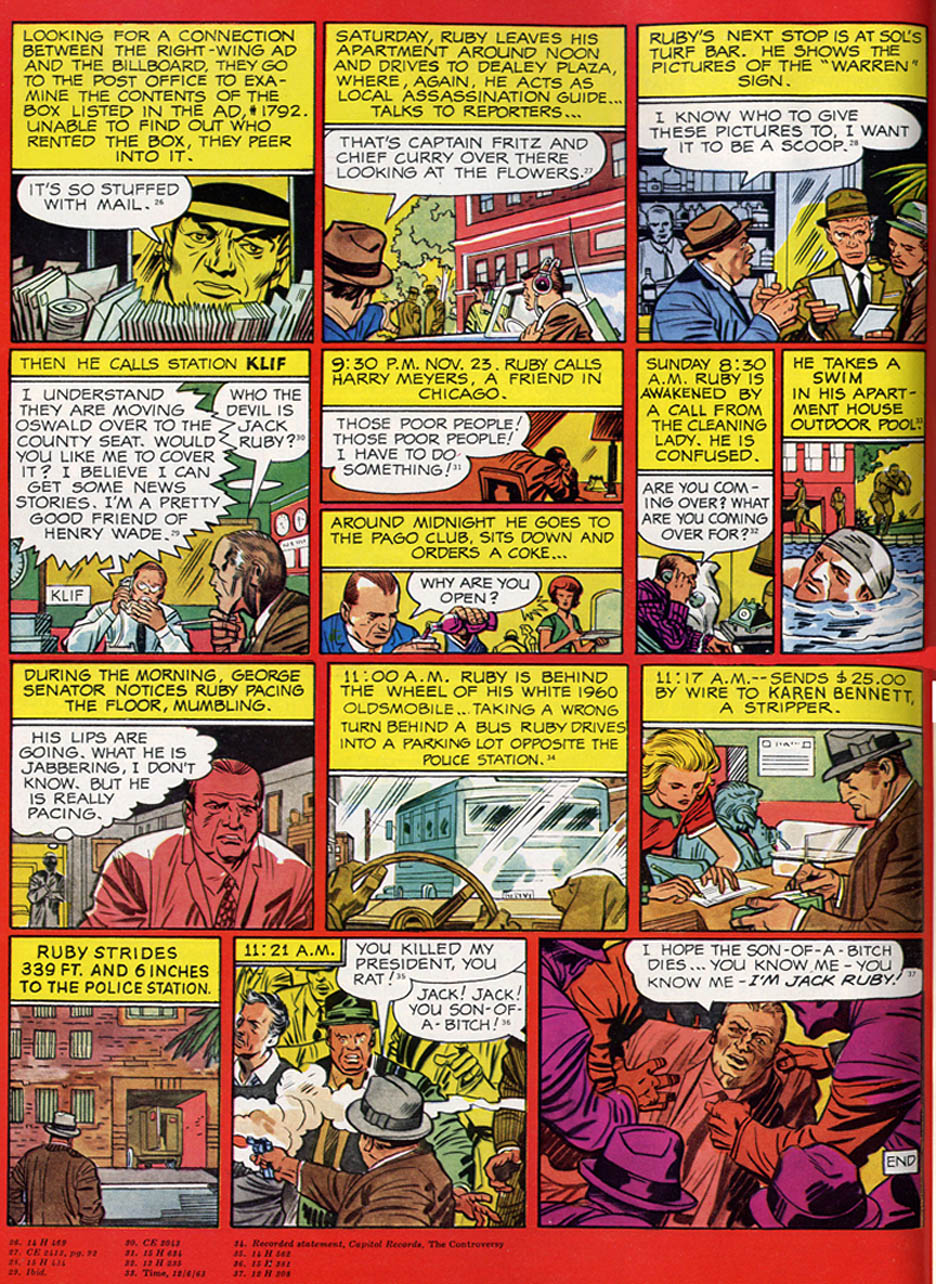
Kirby’s career encompassed so many genres, though, that perhaps it’s inaccurate to describe any of his work as an oddity. It’s still a trifle jarring to encounter the following work from the beginning of his career: a political cartoon.
All drawings by Jack Kirby — under various pseudonyms.
The image at the top of this column is from Craig Yoe‘s The Art of Mickey Mouse. Here’s a rejected Kirby drawing for the same book:
Truly a Jack of all trades!
I Am Bart Beaty!
So readers may have noticed that we’ve had quite a number of posts on Bart Beaty’s recent book Comics vs. Art. It’s a good book, but you may well wonder why we’ve (and especially I’ve) decided to spend quite so much time on it.
The answer is simple. Beaty stole all his ideas from me.
Consider.
— In his second chapter, “Defining a Comics Art World,” Beaty argues that comics should be defined in social terms — that is, in terms of a comics world — rather than in formalist terms. I made this argument on HU two years ago.
—Beaty has a lengthy discussion of the way in which art comics has presented Charles Schulz as a depressive genius and avatar of masculine frustration and self-pity in order to establish his high arts bona fides. I made this argument in the Comics Journal more than four years ago.
—Beaty identifies nostalgia as the central endemic feature of comics, and specifically argues that it permeates and defines not just superhero fanzines, but art comics as well. This has been one of the central critical argument of this site. Here’s just one example.
— Beaty spends a whole chapter focusing on Chris Ware’s performance of masculine self-pity, anchored in particular by a look at Chris Ware’s comics about high art. Again, I was making similar arguments, focused on some of the exact same pieces that Beaty discusses, a good while back.
I’m pretty sure I could find other instances too. (This blog has had a lot of discussion of the original art market for comics, for example, which Beaty talks about in some detail.) Reading Comics vs. Art was, therefore, kind of a bizarre experience. On the one hand, I kept turning pages and saying, “ha! I was right all along! See, a real academic says so!” On the other hand, I kept thinking…”Hey! I thought of that first! I even said it in the Comics Journal! Why don’t I get a shout out…or, you know, at least a citation?”
Of course, I’m sure the reason Beaty doesn’t cite me is that he didn’t get the ideas from me. I think most of these ideas (like, the importance of nostalgia in comics) are true — and since they’re true, of course all intelligent independent inquiry will naturally confirm them.
Still, it’s amusing that Beaty can be seen as in some ways enacting the same highbrow/lowbrow performance that is so central to his discussion. Just as Lichtenstein took the work of “lesser” artists and either elevated or stole it, depending on your perspective, so Beaty can be seen (with a little squinting) as taking the work of (ahem) lesser thinkers and elevating them, or swiping them outright. I am Irv Novick!
Again, I’m sure Beaty isn’t actually using my ideas. But it is kind of interesting that in his discussion of comics vs. art, and in his analysis of the critical conversation around these issues, he virtually never discusses the internet at all. The only time he really talks about the web, I think, is when he analyzes the effect ebay has had on the comics back issue market. But other than that, the ballooning online discussion of comics — the discussion that these days shapes the way that most people in the comics world think about comics on a day to day basis — is simply absent. Tom Spurgeon, for example, doesn’t show up in the index — though CR’s appreciation of a broad range of comics is hugely important in shaping the relationship between comics and art, or comics as art. Similarly, Dan Nadel pops up as an anthologist, but his seminal work with Tim Hodler at Comics Comics (leading to their editorship of tcj.com, isn’t mentioned.
Of course, you can’t talk about everything — but, as Beaty would be the first to acknowledge I think, what you choose not to talk about can be as important as what you decide to discuss. Beaty certainly knows about the blogosphere — he wrote regularly for CR for years. So the decision not to talk about the web and its place in comics criticism seems like it has to be a deliberate one. The discussion of comics vs. art is, for Beaty, one that is best approached through established institutions, and writers who have the imprimatur of established institutions, whether those be publishers or the academy — or fanzines, of course, which have longstanding status in comics. The web may shape practices (via ebay), but it doesn’t have anything in particular to say for itself. Or when it does have something to say, the voice Beaty cites is from Salon or the Electronic Book Review or the New York Times, rather than from the comics blogosphere.
The point here isn’t to indict Beaty (whose book I like a lot), but rather to point out the odd disconnect which remains between sholarly discussion of comics and internet discussion of comics. I call this disconnect “bizarre” because it seems to persist despite the fact that scholars (like Beaty) are all over the web. Charles Hatfield and Craig Fischer, for example, are longtime bloggers, and both have written for the Comics Journal (Craig has a column…as does Ken Parille.) There are a couple of specifically academic sites as well, such as the Comics Grid. And for that matter, my own blogging has given me the opportunity to write a book for an academic press. So obviously there is commerce between the two worlds. And yet, at the same time, there remains a cautious distance — such that Bart Beaty can write a whole book essentially about comics criticism without so much as nodding to the place where, at least in terms of sheer bytes, most of that criticism is occurring.
The reason to leave out the internet is fairly obvious; it’s for the most part not especially scholarly. This is a problem if you’re working on a scholarly project, because it’s hard to evaluate importance and worth when there are no credentials, because many people on the web are not speaking in a way that is of help or interest to scholars, and, last but not least, because it brings down the tone.
Tone is particularly interesting, because I think it’s one of the major differences between Beaty’s book and HU, and because that difference turns out to be surprisingly significant. Comics vs. Art is a confrontational book in many ways — but only to a point. Beaty slyly undermines the cult of Chris Ware, or the line between art comics and superhero fandom, or comics’ definitional project. But those jabs are always jabs rather than roundhouses, and they’re always from the scholarly stance of “this is an interesting phenomenon,” rather than from a more polemical vantage. Beaty’s arguments walk up to the line of saying, “people, you are acting like idiots, and you need to cut it out,” — but he never does cross that line. Which is why, when I paraphrase his arguments, adding a really-not-that-much-more-forthright polemical gloss, people tend to engage forcefully in comments — whereas, my sense is, Beaty’s own arguments themselves largely pass unnoticed.
In part this is just an aspect of the internets’ instant response mechanisms, and in part it’s probably because I’m not as credentialed as Beaty so people feel more comfortable (perhaps rightly!) in telling me that I don’t know what I’m talking about. In part, though, I think it’s because Beaty is deliberately working to be low-key. No doubt some will admire him for that, and there’s certainly pleasure to be found in his wicked gift of understatement. At the same time, though, his unwillingness to come out and take stand can make it difficult to figure out exactly why he’s bothering. What does Comics vs. Art hope to accomplish? Why is it worth pushing on the relationship between comics and art? If Beaty had his druthers, how might comics change?
I think Beaty’s answers to those questions would be similar to mine — that is, comics should be less neurotic and status-conscious, less inward-turned, more feminist, more adventurous, and more able to see itself as part of the arts, broadly defined, rather than as a defensive subculture which has to protect its own. Again, I think that’s what Beaty would say, but I don’t really know for sure. Maybe next time out he’ll tell us — whether or not he cites me while doing so.

Illustration of Bart Beaty by Martin Tom Dieck from Beaty’s staff page at The University of Calgary.


